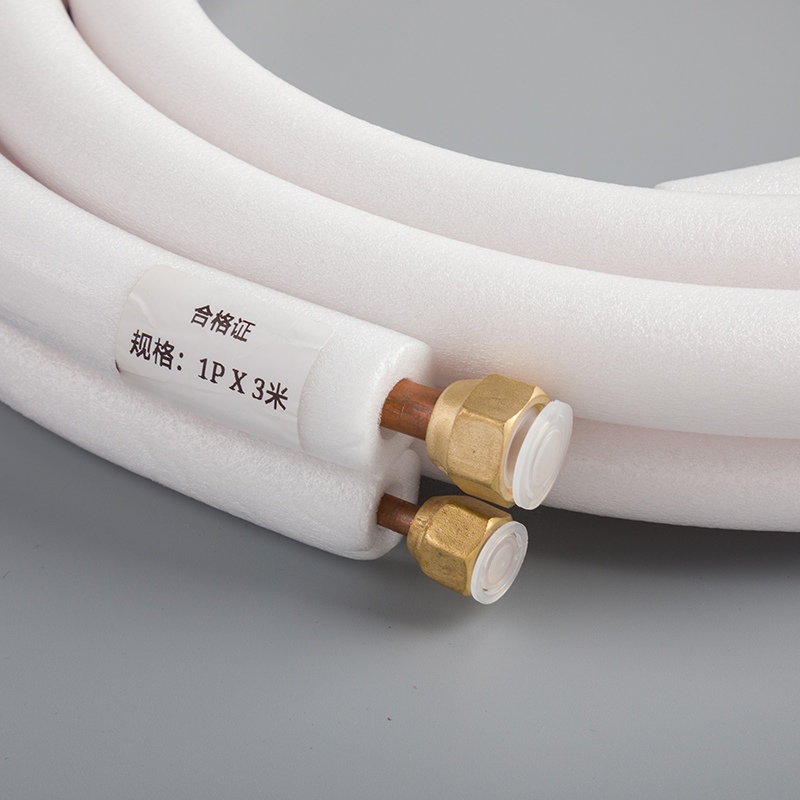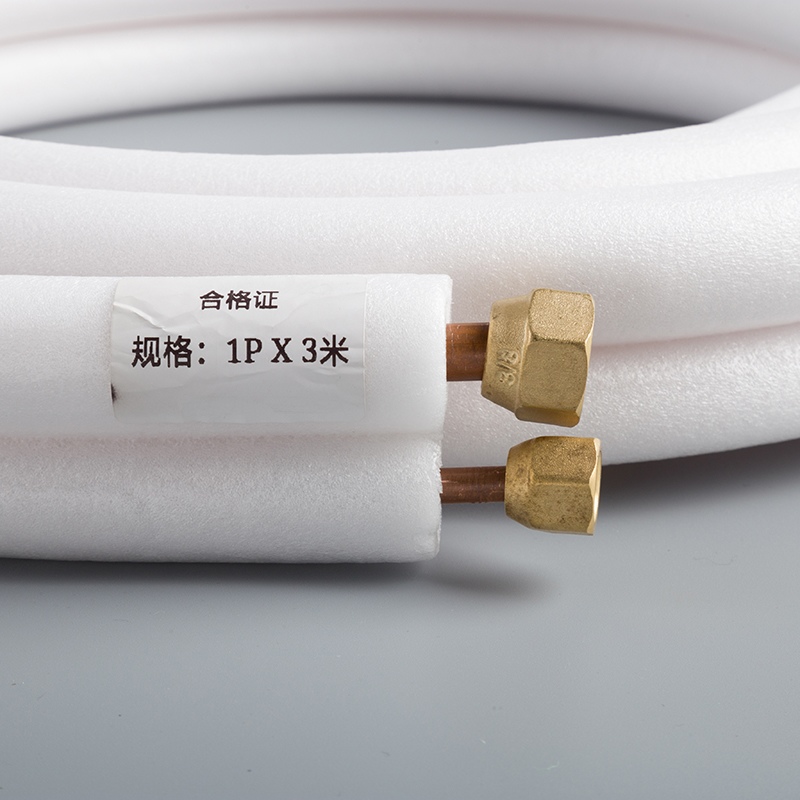Top 5 Most Effective Insulation Types Revealed

Effective insulation plays a crucial role in reducing energy consumption and enhancing the comfort of indoor spaces. Understanding the top five most effective insulation types is essential for making informed decisions. These insulation materials not only provide superior thermal performance but also offer long-term benefits. Exploring their properties, benefits, and applications can guide individuals towards selecting the most suitable option for their needs.
Aerogel Insulation
Aerogel Insulation, known for its exceptional properties, is a highly sought-after material in the realm of insulation. Its composition, primarily consisting of 95-99% air, sets it apart as a lightweight yet effective insulator. The unique morphology of silica aerogel contributes to its lower thermal conductivity compared to standard air. This characteristic makes aerogel insulation stand out as a top choice for various applications.
Properties
Composition
The composition of aerogel insulation is predominantly air, making it incredibly lightweight and efficient. With its porous structure and high air content, this material offers superior thermal resistance and insulation capabilities.
Thermal Performance
When it comes to thermal performance, aerogel insulation excels due to its low thermal conductivity. For instance, GORE Thermal Insulation boasts a remarkable thermal conductivity of about 0.020 W/m•K and a specific heat capacity of 1.8J/g °C. These features make it an ideal choice for environments requiring temperature regulation.
Benefits
Energy Efficiency
One of the key benefits of aerogel insulation is its energy efficiency. By providing excellent thermal insulation, this material helps reduce heat transfer significantly, leading to lower energy consumption and cost savings in the long run.
Durability
Durability is another standout feature of aerogel insulation. Its robust nature ensures longevity and effectiveness over time, making it a reliable option for insulation needs.
Applications
Building Envelopes
Aerogel insulation finds extensive use in building envelopes where maintaining optimal indoor temperatures is crucial. Its insulative properties contribute to energy efficiency and comfort within structures.
Industrial Uses
In industrial settings, aerogel insulation plays a vital role in enhancing thermal management processes. From insulating equipment to regulating temperatures in industrial facilities, this material proves invaluable for various applications.
Vacuum Insulated Panels
Vacuum Insulated Panels, also known as VIPs, are a revolutionary insulation solution that offers exceptional thermal performance while being remarkably thin and lightweight. The key to their effectiveness lies in the creation of a vacuum between two layers of insulation, which significantly reduces heat transfer. This innovative design makes VIPs an ideal choice for spaces where traditional insulation options may be limited.
Properties
Structure
The structure of Vacuum Insulated Panels consists of a core material enclosed within gas-tight panels. This core material is typically made from pyrogenous silicon dioxide powder, ensuring optimal thermal resistance and efficiency.
Insulating Material
The insulating material within VIPs plays a crucial role in minimizing heat flow. By utilizing advanced technologies and materials, such as nanoporous silica aerogel or fiberglass, these panels achieve high levels of thermal insulation.
Benefits
Space-saving
One of the primary advantages of Vacuum Insulated Panels is their space-saving design. Due to their thin profile and lightweight nature, these panels can be easily integrated into various structures without compromising valuable space.
High Thermal Resistance
VIPs offer unparalleled thermal resistance, outperforming traditional insulation materials by a significant margin. Their ability to minimize heat transfer effectively contributes to enhanced energy efficiency and reduced heating costs.
Applications
Residential Buildings
In residential settings, Vacuum Insulated Panels are ideal for improving the thermal performance of homes. By installing these panels in walls, ceilings, or floors, homeowners can create a more comfortable living environment while reducing energy consumption.
Commercial Buildings
The use of VIPs in commercial buildings has gained popularity due to their superior insulating properties. From office spaces to retail establishments, these panels help maintain consistent indoor temperatures and contribute to overall energy savings.
Spray Foam Insulation

Properties
Composition
Spray foam insulation consists of a two-part mixture that combines isocyanate and polyol resin. When these components are mixed, a chemical reaction occurs, creating an expanding foam. This foam quickly hardens and forms a continuous insulating layer that effectively seals gaps and voids.
Insulating performance
The insulating performance of spray foam insulation is exceptional due to its expansive nature. It fills even the smallest crevices, providing a seamless barrier against heat transfer. This property helps maintain consistent indoor temperatures by preventing air leakage and minimizing energy loss.
Benefits
Air barrier creation
A significant benefit of spray foam insulation is its ability to create an airtight seal wherever it is applied. By expanding and filling gaps, it forms a solid barrier that prevents air infiltration. This air sealing capability enhances the overall energy efficiency of buildings by reducing the workload on heating and cooling systems.
Moisture resistance
Spray foam insulation offers excellent moisture resistance properties, making it ideal for areas prone to humidity or water exposure. The closed-cell structure of the foam repels water, preventing mold growth and structural damage caused by moisture infiltration. This feature ensures long-term durability and protection against moisture-related issues.
Applications
Attics
In attics, spray foam insulation plays a crucial role in improving thermal efficiency and preventing heat loss through the roof. By applying this insulation material to the underside of the roof deck or attic floor, homeowners can create a well-insulated space that reduces energy consumption and enhances comfort.
Walls
When used in walls, spray foam insulation effectively seals wall cavities, eliminating drafts and enhancing the overall energy performance of buildings. By filling voids within walls with this insulating material, structures become more thermally efficient, leading to lower heating and cooling costs over time.
Extruded Polystyrene Foam
Extruded Polystyrene Foam, also known as XPS, stands out as a versatile and high-performance insulation material suitable for various construction applications. Its exceptional properties make it an ideal choice for those seeking superior thermal performance and durability.
Properties
Structure
Extruded Polystyrene Foam is a rigid foam with a low density of 33kg/m³, making it lightweight yet structurally robust.
The unique structure of XPS ensures outstanding strength and adaptability, allowing it to be used in diverse construction scenarios.
Thermal Performance
With its excellent thermal insulation capabilities, Extruded Polystyrene Foam provides effective temperature regulation and energy efficiency.
The high compression strength of XPS enhances its thermal performance, making it a reliable choice for insulation needs.
Benefits
Cost-effectiveness
Opting for Extruded Polystyrene Foam proves to be cost-effective in the long run due to its durability and energy-saving features.
The material's longevity and minimal maintenance requirements contribute to overall cost savings for homeowners and builders alike.
Ease of Installation
Installing Extruded Polystyrene Foam is a straightforward process that can be efficiently carried out by professionals or DIY enthusiasts.
Its lightweight nature and compatibility with various construction methods make it easy to work with in different project settings.
Applications
Foundations
When used in foundations, Extruded Polystyrene Foam acts as a reliable insulating layer that helps regulate indoor temperatures effectively.
Its structural integrity and moisture resistance make it an ideal choice for enhancing the durability of building foundations.
Roofs
Incorporating Extruded Polystyrene Foam in roofing systems improves thermal efficiency and reduces heat loss through the roof.
By adding this insulation material to roofs, homeowners can create well-insulated spaces that promote energy conservation and comfort.
Mineral Wool Insulation
Mineral Wool Insulation is a versatile and cost-effective solution known for its exceptional thermal performance and fire resistance. Its composition, typically made from stone or glass fibers, contributes to its insulating properties, making it a popular choice for various applications.
Properties
Composition
The composition of Mineral Wool Insulation primarily consists of stone or glass fibers bound together to form a dense mat. This structure enhances its thermal resistance and durability, ensuring long-term effectiveness in regulating indoor temperatures.
Thermal Performance
In terms of thermal performance, Mineral Wool Insulation excels in minimizing heat transfer due to its high-density composition. This material effectively traps air pockets within its fibers, creating a barrier that reduces energy loss and maintains consistent temperatures.
Benefits
Affordability
One of the key advantages of Mineral Wool Insulation is its affordability compared to other insulation materials. Its cost-effective nature makes it an attractive option for individuals looking to improve energy efficiency without exceeding their budget.
Fire Resistance
Mineral Wool Insulation is renowned for its exceptional fire resistance properties. The mineral fibers used in this insulation material are non-combustible, providing added safety by inhibiting the spread of flames in case of fire incidents.
Applications
Pipelines
When applied to pipelines, Mineral Wool Insulation acts as a reliable thermal barrier that helps maintain consistent temperatures within the pipes. Its ability to resist heat transfer ensures optimal operational conditions and prevents energy loss in industrial settings.
Building Envelopes
In building envelopes, Mineral Wool Insulation plays a crucial role in enhancing energy efficiency and comfort. By insulating walls and roofs with this material, structures can better retain heat during colder months and stay cool in warmer seasons.
In summarizing the top five most effective insulation types, it is evident that each material offers unique properties and benefits for enhancing energy efficiency and comfort. Effective insulation not only reduces energy consumption but also contributes to sustainability efforts by minimizing carbon footprint. Investing in quality insulation may require initial costs, but the long-term savings make it a cost-effective choice. As technology advances, thermal imaging tools play a crucial role in identifying areas for improvement, emphasizing the importance of efficient insulation for energy conservation and environmental preservation.
See Also
Enhance AC Efficiency with Copper Pipes: Insulation Tips
Advantages of Twin Copper Pipe Coils with White PE
Revolutionizing HVAC with Twin Copper Pipe Coils
Exploring the Affordability of Twin Copper Pipe Coils
Exploring Efficiency: Copper vs. Aluminum in Air Conditioning


